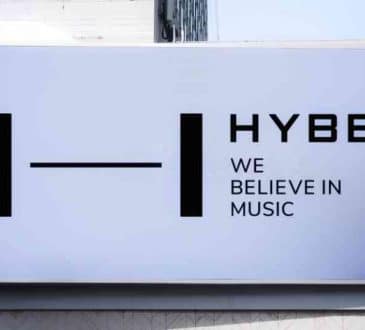A Successful Digital Transformation Demands a Culture of Innovation

In the era of digitization, businesses face a crucial imperative: to adapt and embrace innovation or risk being left behind. The rapid evolution of the digital landscape underscores the necessity for a culture of innovation as it’s challenging to predict how technology and external factors will shape the business environment in the near and distant future.
This environment demands that any organization undertaking a digital transformation program for long-term sustainable success must establish a culture where innovation thrives. A recent study found that digitally innovative organizations grew their revenue more than twice as fast as those that hadn’t built this capability.
The digital era has profoundly reshaped industries and business models. Yet, innovation extends beyond these realms into products, processes, customer experience, technology architecture, and more. This implies that organizations have abundant opportunities to gain an advantage, address pain points in their operations, enhance customer service, and generate value.
The traditional model of innovation relied on a top-down hierarchy or dedicated research and development (R&D) departments. While this approach worked well for many decades, in the digital era it’s severely limited. The dated approach excludes the wealth of expertise distributed throughout the organization that’s unable to contribute because it’s constrained by leadership, hindered by organizational silos, or lacks tools and access to information.
Another critical trend to consider is Artificial Intelligence, which will transform the workplace by replacing mundane and repetitive tasks. This shift will move the workforce toward higher cognitive activities that require critical thinking and problem-solving skills, such as customer service and driving innovations. Such shifts should be seen as opportunities to create an engaged and high-performing workforce. In this context, it’s important to note that positive motivating factors that drive engagement, according to Herzberg’s two-factor theory, are challenging work, achievement, recognition, and opportunities.
Digitally mature companies are reshaping the definition of success by embracing innovative ideas from diverse sources — both externally and internally. This shift has given rise to two new models: Open Innovation and Democratized Innovation.
Open Innovation – This involves practices by which organizations utilize multiple external sources, such as customers, partners, and the public at large, to drive innovation. A compelling example of this model is LEGO. In 2004, the company was on the verge of bankruptcy due to a series of unsuccessful products that failed to excite customers. The situation was compounded by increasing competition from video games and online activities. To find new product ideas, LEGO turned to a different source — its customers. It introduced the LEGO Ideas platform, allowing fans to upload product ideas. If an idea received 10,000 or more votes, LEGO would review it for possible production. This approach not only led to the creation of products that resonated with customers but also helped build a community of loyal enthusiasts.
Democratizing innovation – This practice of expanding ideas and innovation internally requires building a culture of innovation and capabilities in people to explore ideas. Leadership creates an environment in which employees are encouraged to pursue their creativity, connect dots, and develop novel solutions that generate business value. This starts with a philosophy and tone that removes hierarchical barriers, values openness and experimentation, and rewards initiative. It also involves providing training, breaking down organizational silos through cross-functional teams, and giving people access to resources, tools, and data for them to understand the big picture.
A great example of getting this right is the innovation powerhouse, 3M. 3M has created a wide variety of innovation centers and technical forums to facilitate building a network among scientists, employees, and customers, where they freely exchange their ideas and discuss future projects. They have implemented a 15% rule, which encourages employees to dedicate that portion of their time to innovation. This concept traces its roots back to 1914 when William McKnight, the company’s general manager at the time, instituted the philosophy of “Listen to anybody with an idea.” This approach has led to the development of several successful products, such as Post-it Notes and Scotchgard. 3M has set a goal of 30/4, meaning it expects 30% of its revenue to come from products created within the last four years.
A critical enabler of success for operational improvements, especially in the democratized innovation model, is to create a holistic Operational Intelligence repository that provides specifics how the organization operates by detailing processes, products, resources, ownership, and much more, and making it transparent and available to anyone and everyone to refine their ideas. To be comprehensive, this repository should be indexed by a complete inventory of all the processes that the organization performs. It describes the connective tissue that gives business context to all other information. An Operational Intelligence repository is key to breaking down organizational silos and giving employees the big picture of end-to-end processes to understand how their idea impacts the end value created.
Enabling innovation also demands building a process capability, typically through a Process Center of Excellence (COE), to build and maintain the operational intelligence information for long-term value. This will require investment and leadership commitment, but it will position the organization to drive the type of innovation required to thrive in the digital era.
Written by Michael Schank.
Have you read?
Report: Countries with the highest rates of Dementia, 2024.
Report: Countries with the Highest Rates of Lung Cancer, 2024.
Report: These Are The Countries with Universal Health Coverage Programs, 2024.
Revealed: These Are The Countries with the Highest Death Rates, 2024.
Revealed: The Healthiest (and Unhealthiest) Countries in the World, 2024.
Add CEOWORLD magazine to your Google News feed.
Follow CEOWORLD magazine headlines on: Google News, LinkedIn, Twitter, and Facebook.
Copyright 2024 The CEOWORLD magazine. All rights reserved. This material (and any extract from it) must not be copied, redistributed or placed on any website, without CEOWORLD magazine' prior written consent. For media queries, please contact: info@ceoworld.biz








